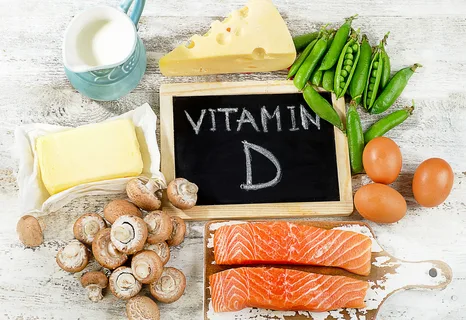Navigating the world of vitamin supplements can be daunting, especially when faced with a myriad of labels and claims. Understanding what goes into these products and how to interpret their labels is crucial for making informed choices about your health. This guide aims to demystify vitamin labels, empowering you to make confident decisions based on accurate information.
Introduction to Vitamin Labels
Vitamin labels provide essential information about the contents, potency, and recommended usage of the supplement. They are designed to inform consumers about what they are buying and how it may benefit their health.
Key Components of Vitamin Labels
- Supplement FactsThe Supplement Facts panel resembles the nutrition facts label found on food products. It lists the serving size, amount per serving (in grams, milligrams, or micrograms), and the percent Daily Value (%DV) of each nutrient.
- Ingredients ListThis section details all ingredients present in the supplement, listed in descending order by weight.
- Daily Value (DV)DV indicates how much of a nutrient a serving of the supplement provides in relation to the daily recommended intake. It helps consumers assess the relative nutritional value of the product.
- Other IngredientsApart from active ingredients, supplements often contain fillers, binders, and other additives. These are listed here.
Interpreting Vitamin Labels: What to Look For
Understanding vitamin labels involves looking beyond flashy claims and focusing on specific details that matter to your health. Here are key factors to consider:
- Nutrient Forms: Some vitamins come in different forms (e.g., vitamin D2 vs. D3). The label should specify which form is used.
- Dosage: Ensure the dosage per serving meets your specific needs, especially if recommended by a healthcare provider.
- Purity and Quality: Look for certifications like USP (United States Pharmacopeia) or NSF (National Sanitation Foundation) that indicate the supplement has been tested for purity and quality.
FAQ Section
FAQs About Reading Vitamin Labels
What are the most important things to look for on a vitamin label?
When reading a vitamin label, focus on the serving size, dosage of each nutrient, %DV, form of the nutrient (if applicable), and the list of other ingredients.
How can I tell if a vitamin supplement is high quality?
Look for certifications from third-party organizations like USP or NSF. These indicate that the supplement has undergone testing to ensure it meets certain standards for purity and quality.
Should I be concerned about additives and fillers in vitamin supplements?
While additives and fillers are common in supplements, some people may prefer products with fewer or more natural additives. Check the ingredients list to see what’s included.
What does “%DV” or “Daily Value” mean on a vitamin label?
%DV indicates how much of a nutrient (like vitamins or minerals) one serving of the supplement provides in relation to the daily recommended intake. It helps you understand the nutritional value of the product.
Is it better to choose natural or synthetic vitamins?
Both natural and synthetic vitamins can be effective. The choice may depend on personal preference, dietary restrictions, or specific health conditions. The label should specify if the vitamins are natural or synthetic.
How do I know if the dosage of a vitamin supplement is right for me?
Consulting with a healthcare provider is crucial to determine the appropriate dosage of any vitamin supplement based on your individual health needs and any existing medical conditions.
Can I trust the claims made on vitamin labels?
Be cautious of exaggerated or unverified claims on supplement labels. Look for evidence-based information and consider reputable sources when evaluating the effectiveness of a supplement.
What should I do if I experience side effects from a vitamin supplement?
Discontinue use and consult a healthcare professional if you experience any adverse effects from a supplement. It’s important to seek medical advice to determine the cause and appropriate action.
Are there any vitamins or minerals that I should avoid in high doses?
Certain vitamins and minerals, like vitamin A, iron, and zinc, can be harmful in high doses. Always follow recommended dosages and consult with a healthcare provider before taking supplements in high amounts.
How can I ensure I’m not taking too many vitamins or minerals from multiple supplements?
Keep track of all supplements you take and their dosages. Be mindful of overlapping nutrients from different supplements to avoid exceeding safe levels.
Should I take vitamin supplements if I already eat a balanced diet?
A balanced diet should ideally provide most of the nutrients your body needs. However, certain individuals may benefit from supplements due to specific dietary restrictions, health conditions, or inadequate nutrient intake.
Conclusion
Understanding how to read and interpret vitamin labels empowers you to make informed decisions about which supplements to incorporate into your health regimen. By paying attention to key details like serving size, %DV, ingredient lists, and quality certifications, you can ensure that the supplements you choose are safe, effective, and aligned with your health goals. Always remember to consult with a healthcare professional before starting any new supplement regimen, especially if you have underlying health concerns or are taking medications. With this guide, you are equipped to navigate the world of vitamin labels confidently and intelligently.
- New Patient Treatment Near Milford, Surrey - May 9, 2025
- Neauvia Hydro Deluxe Skin Booster Treatments Near Kingston Upon Thames, Surrey - May 7, 2025
- Dermal Fillers Near Albury, Surrey - May 6, 2025

